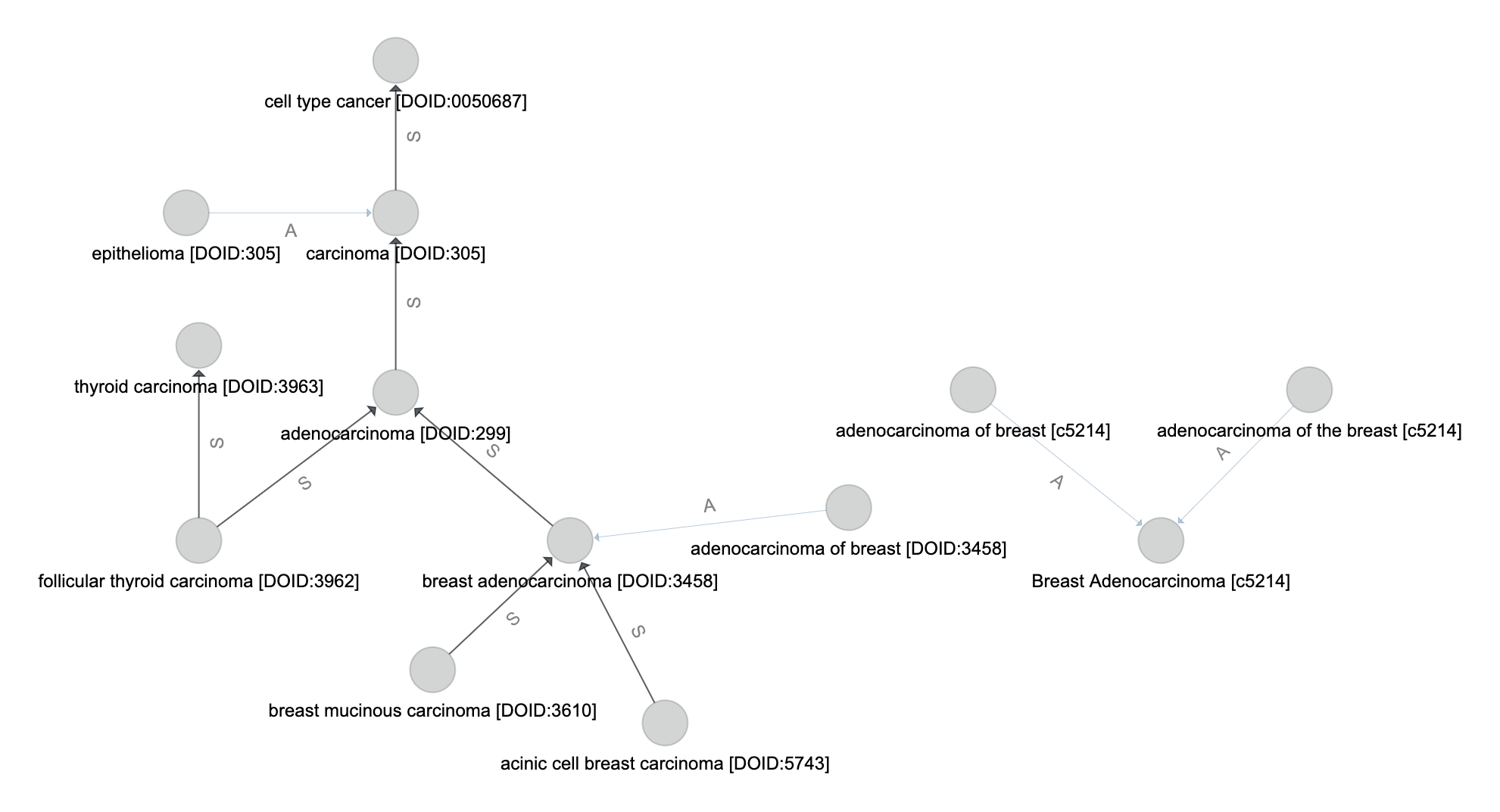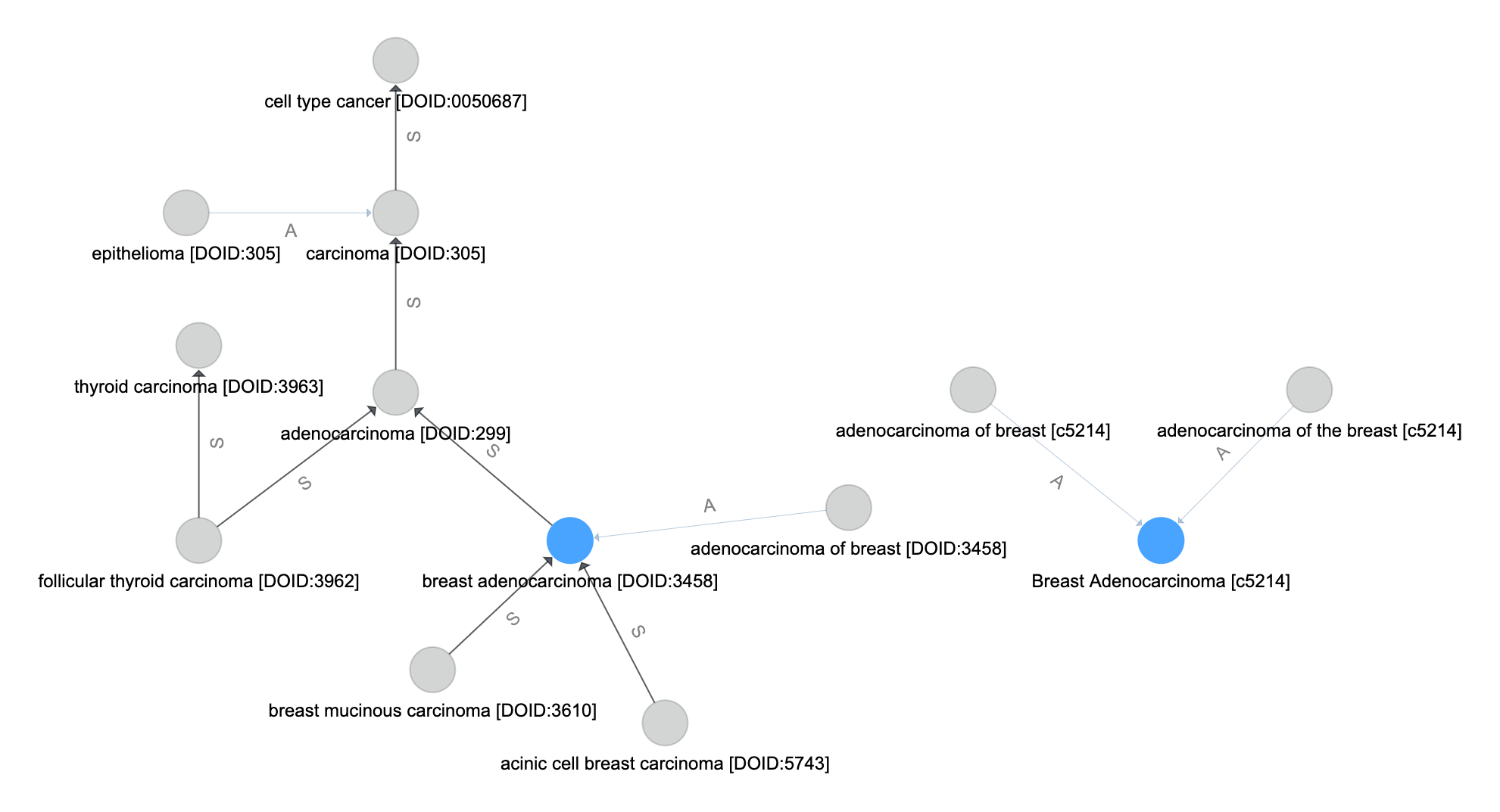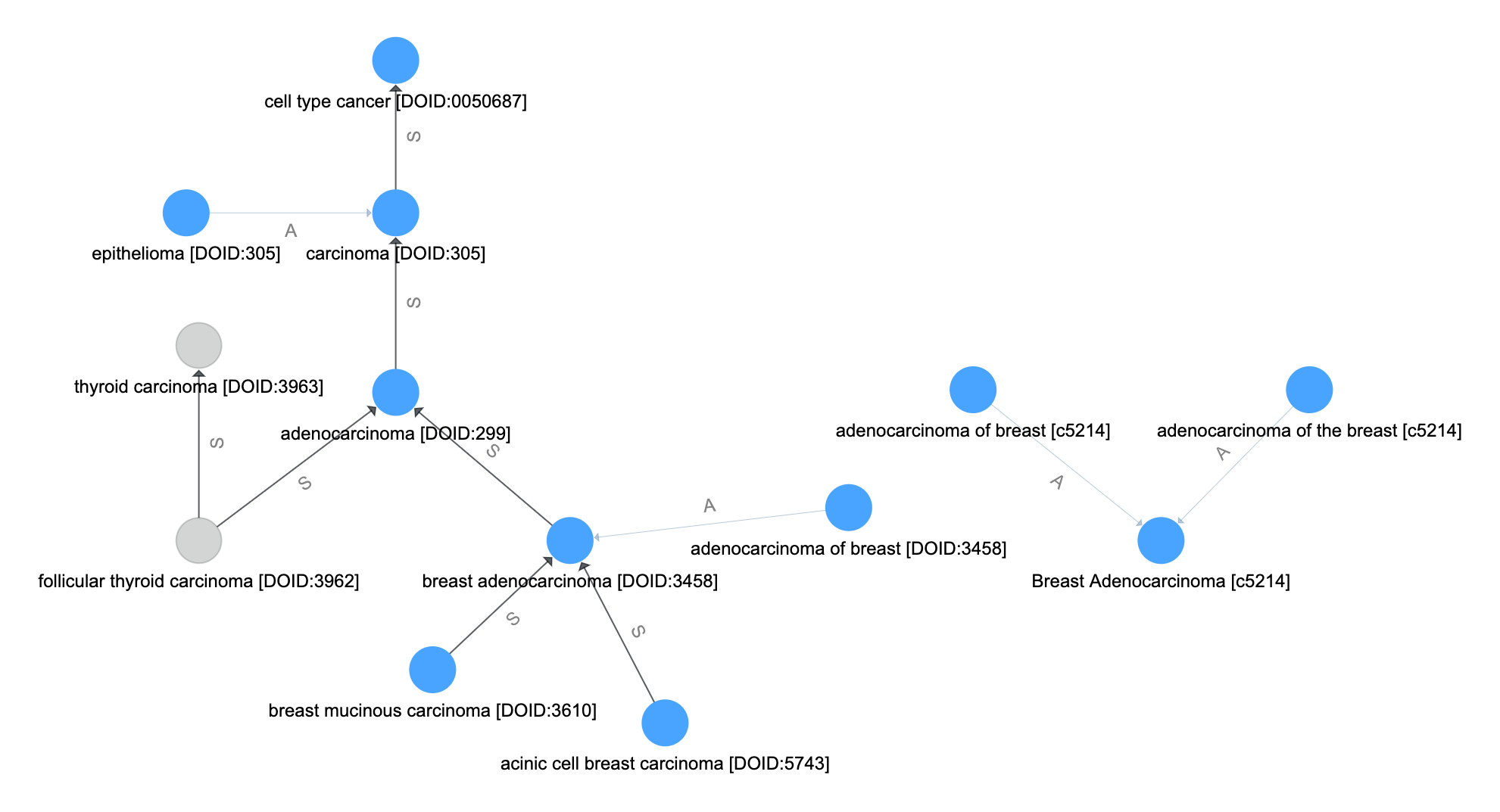Ontology Algorithm¶
The matching algorithm implemented by this adapter heavily uses the Graph Structure of GraphKB to resolve aliases, generalisms, etc. The default behaviour of this algorithm is described below and shown in the related examples. This is primarily accomplished via the similarTo query type provided by the GraphKB API. This algorithm can be viewed interactively in GraphKB via the matching section of the about pages

Definitions¶
The entire knowledge base is defined as the graph, \(G = (V, E)\). For any given query let the subgraph of \(G\) containing only vertices of the class type specified in the query (ex. Disease) be, \(V_t\).
All edges between these vertices are then categorized into two disjoint sets: synonym-like (\(E_{syn}\)) or inheritance-like (\(E_{inh}\)). By default the synonym-like edges are: GeneralizationOf, AliasOf, CrossReferenceOf, DeprecatedBy, and Infers. Whereas the inheritance-like edges are: SubClassOf, and ElementOf.
Edge Groups are Configurable
These are the default division of Edges. However, classes used for the edge sets can be configured in the query body of similarTo type queries sent to GraphKB
Synonym-like edges are treated as undirected and therefore the set of synonym-like edges used for the following steps can be written
Disease matching on the following graph will be used as a running example

Match by Name¶
Let the set of vertices (from \(V_t\)) where the name attribute is an exact match to the input query name be \(V_m\).

Resolve Aliases¶
Follow synonym-like edges from the set of name-matched vertices
Let \(P(v_0,v,E)\) be the set of vertices that forms a path from vertex \(v_0\) to \(v\) along the edges in \(E\) and in their direction. If no such path exists, then \(P = \emptyset\).
The set of vertices that resolve aliases in the query are formed by including all paths from \(v_0 \in V_\text{m}\) along the \(E_\text{usyn}\) edges.

Follow the Inheritance-like Edges¶
The inheritance-like edges are followed next. Unlike the synonym-like edges, directionality is important here. By following the inheritence-like edges in \(E_\text{inh}\) from and to all vertices \(V_\text{syn}\) we create the set of inheritence vertices. This is the set of vertics involved in paths which originate or terminate in a vertex perviously matched.

Resolve Final Aliases¶
Finally, we repeat the synonym-like expansion

Bounding¶
Note that the above Graph Traversals are bounded by input parameters to specify a maximum depth.